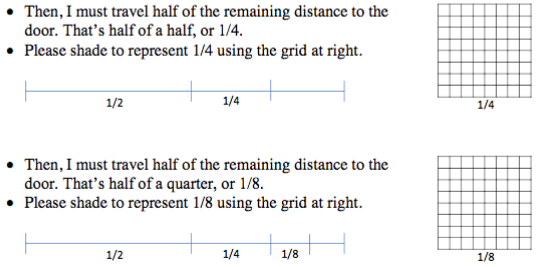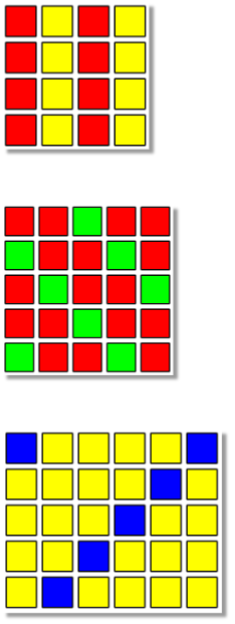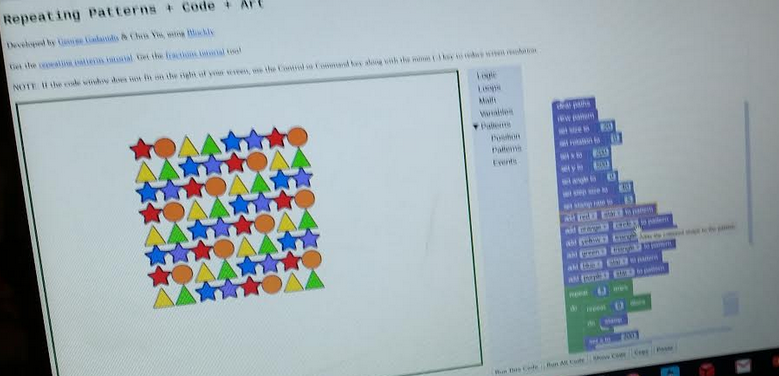Alycia Cazzola, Melanie Drummond, Katherine Kenney, Rebekah McElhone & Judy Mullen — Grade 3-4 teachers, Wellington Catholic DSB
We walk in and out of our classroom door several times in a school day. Have you ever stopped to consider the fractions we encounter on the way?
What if I continue traveling half of the remaining distance, on and on, forever? Will I ever get to the door?
Most children say: “No. It’s not possible!”
But how can that be? I travel to the door lots of times, and on my way I pass all of these fractions, and I do get there. Is it only when I think about the fractions that it makes a difference?
Children shaded 8×8 grids to represent the first 6 fractions on the way to the door: 1/2, 1/4, 1/8, 1/16, 1/32 and 1/64. Then we asked: “If you cut out all of the shaded areas, for all the fractions to the door, and then put them together to form a new shape, how big would that shape be? Would it fit in our classroom? In Guelph? In your hand? In Canada?”
Children guessed that it would grow forever and would not fit in our classroom. But when they started cutting out the shaded parts, they noticed that they all fit in one single 8×8 square, and that “I can hold infinity in my hand!” Now that’s something they looked forward to sharing at home.
The we used the Repeating Patterns coding environment at https://researchideas.ca/patterns [There’s fractions tutorial at this link you can use. We adapted it for our lesson plan. And we printed it for children to take home to share with parents.]
Children used code to create grids with colour and we discussed the fractions hiding inside.
Interestingly, most children first saw 4/8 in the grid above. 4 of 8 columns are red.
Then 32/64. 32 out of 64 small squares are red.
Then, lastly,they saw that 1/2 of the grid (or the columns, or the small squares) is red.
There was a lot of incidental learning of equivalent fractions, which we had not planned to teach.
“One thing I noticed was the kids’ ability to reduce fractions to their smallest for, ie. 50/100 was 1/2. Equivalent fractions was definitely a big lesson for that day!”
“Here is a video of a student giving the equivalent fraction and naming 50/100. This was a big moment for me to see! I was impressed. We hadn’t worked with fractions that ‘big’ or named equivalent fractions.”
“Here is another student who began to give me lots of information about coding and the we switched to talking about fractions and he was able to pull out the equavalent fraction too.”
Then children were challenged to create the patterns below, and identify the fractions hiding inside.
And they created their own fraction patterns!
It was lots of fun!






